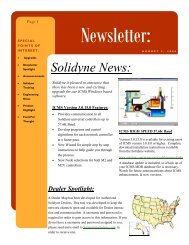TAC Pneumatic Products Catalog
TAC Pneumatic Products Catalog
TAC Pneumatic Products Catalog
You also want an ePaper? Increase the reach of your titles
YUMPU automatically turns print PDFs into web optimized ePapers that Google loves.
R436<br />
Typical Applications<br />
84<br />
Diaphragm Connections<br />
Refer to figure below. For positive pressure only, connect sampling<br />
line to port E; port F remains open to atmosphere.<br />
For negative pressure only, connect sample line to port F; port E<br />
remains open to the atmosphere.<br />
Two positive samples; connect higher pressure to port E and lower<br />
pressure to port F.<br />
Two negative samples; connect more negative sample to port E;<br />
less negative to port E.<br />
One positive and one negative; positive to port E; negative to port F.<br />
Diaphragm<br />
Positive Only<br />
Lower Negative<br />
Higher Positive<br />
E F<br />
Negative Only<br />
Higher Negative<br />
Lower Positive<br />
Figure 2 Typical Applications.<br />
Electrical<br />
Before any pressure is applied to the<br />
diaphragm, the switch contact rests in the<br />
N.C. position (see figure below). Upon<br />
application of sufficient pressure to actuate<br />
the switch, the contact transfers to the N.O.<br />
position. Connect control, status, and/or<br />
alarm circuits, as shown.<br />
To prove excessive air flow or pressure<br />
C<br />
NC<br />
NO<br />
Status<br />
Alarm<br />
To prove insufficient air flow or pressure<br />
C<br />
NC<br />
NO<br />
Alarm<br />
Status<br />
© Copyright 2006 <strong>TAC</strong>. All Rights Reserved. F-27383-1



